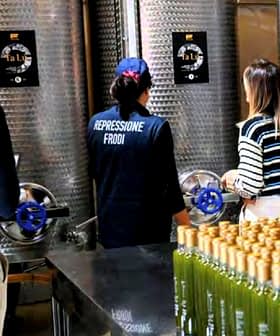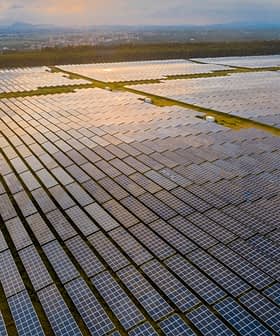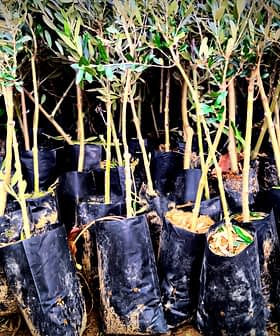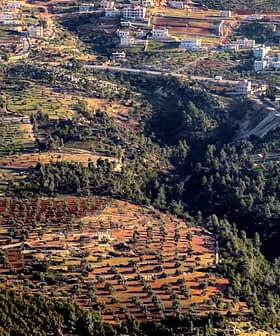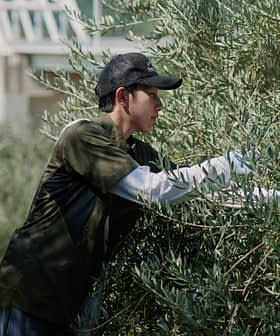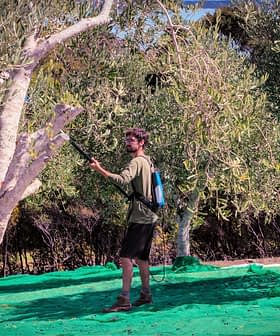Tuscany Olive Harvest Rebounds with Better-Than-Expected Results
Drought conditions kept away pests, autumn rainfall helped plants and now growers in the central Italian region celebrate a better-than-expected olive oil yield.
 Castiglione d"Orcia, Tuscany, Italy
Castiglione d"Orcia, Tuscany, Italy Tuscan olive oil producers are experiencing a better than expected harvest with high quality oil due to the rare presence of the olive fruit fly, resulting from prolonged higher temperatures. Despite challenges such as drought, energy crisis, and rising raw material prices, producers are investing in new technologies to maintain quality and are focusing on educating consumers to appreciate the value of high-end olive oils.
Tuscan olive oil producers are seeing a better harvest than expected, with their yield exceeding last season’s harvests and initial estimates for this season. In Tuscany, the new olive oil quality is also reported to be very high. This result is widely attributed to the rare presence of the olive fruit fly, whose reproduction had been curtailed by the prolonged higher-than-average temperatures.
“The 2022/2023 campaign has begun under a positive and comforting note. We can foresee a final 15 to 20 percent increase in olive oil yield when compared to the last campaign,” Fabrizio Filippi, president of the Consortium for the protection of Tuscan PGI (Protected Geographical Indication) extra virgin olive oil, told Olive Oil Times.
Coming after many months of drought, which has been plaguing the entirety of Italy since the winter of 2021, this year’s August rainfall in much of Tuscany has made the difference. Additionally, more precipitation than normal fell at the beginning of autumn in the central Italian region.
“Such conditions have contributed to restore the plants, which in some areas had already shown signs of water stress. Fruits were finally able to correctly develop, preventing qualitative abnormalities. Still, the situation is not homogenous and production has dropped in those areas where drought has been unleashing its effects,” Filippi noted.
According to the Tuscan expert, as the climate changes, the many micro-regions in Tuscany will require ever more highly specific conditions to grow olives well. “Having said this, we have seen a growing harvest in the most internal areas and lower volumes in some coastal regions,” Filippi explained.
As with the whole Italian olive sector, Tuscan olive oil producers are also coping with the energy crisis and the spiking prices of raw materials, conditions exacerbated by inflation and the Russian war in Ukraine.
See Also:Olive Oil Business News“To all of this we undoubtedly have to add the environmental scenario, with the quick and worrying phenomenon of climate change, whose effects are visible in our daily life,” noted Filippi. “Thermal and rainfall anomalies, and extreme events, have constantly characterized every single olive harvest season since the last eight years or so,” he added.
One of the crucial aspects of the harvest campaign for Tuscan extra virgin olive oil producers has been managing the temperature of the fruits. As the harvest began in a warmer-than-average autumn, growers warned that olive oil quality could be jeopardized by excessive temperatures.
“We have made significant investments to renew our olive milling facilities and that proved crucial in coping with such higher than normal temperatures,” Gionni Pruneti, agronomist and co-owner of Frantoio Pruneti, the Gold Award winner at the 2022 New York International Olive Oil Competition, told Olive Oil Times.
More specifically, Pruneti’s new mill included a refrigerating line that takes care of both pre-cooling the new olives at optimal temperatures and keeping the temperature consistent during the milling operations.
“During the whole extraction process, as soon as we detect that temperature is rising, we can immediately intervene to lower it and bring it back to our quality standards,” noted Pruneti.
Referring to the governing of certified Tuscan extra virgin olive oil production, Pruneti underlined how “we actually maintain operating temperatures lower than the product regulations. Such lower temperatures are the most suitable to extract from our fruits all their flavors and scents,” he added.
Pruneti noted a satisfying olive oil yield in terms of volume and reported a higher quality of the final product. “When compared to the 2021, we undoubtedly had larger volumes. The proportions of core, pulp and peel of the olives were certainly better,” Pruneti said.
Tuscan PGI extra virgin olive oil is the most recognizable of the 49 certified Italian olive oil producers. According to the latest Ismea/Qualivita data, approximately 20 percent of all Tuscan olive oil production happens under the PGI disciplinary umbrella.
Regarding value, Tuscan PGI EVOOs represent about 30 percent of certified extra virgin olive oil production in Italy. Tuscan EVOOs exports brought in €35 million of the total €66 million certified Italian extra virgin olive oil export value.
According to Filippi, Tuscan olive oil production shows some specific vulnerabilities. For example, at least 30 percent of olive growing happens in remote areas, where it is traditionally associated with landscaping rather than olive oil production.
“The [olive growing] identity card of Tuscany shows fragile and thin traits, so to speak, as one hectare is the average surface of the farm which produces on average one litre of olive oil per plant. To this it must be added that approximately 30 percent of the olive groves end up abandoned,” Filippi noted.
To bring new life to the region’s production, Filippi noted how approximately 10 percent of the olive cropland could be destined for more productive and modern olive farming models, including intensive or high-density olive groves.
“Still, all varieties would have to be of Tuscan origin and be part of the native regional germplasm in order to safeguard the genetic, environmental, landscape and identity heritage,” Filippi said.
Filippi noted how some of the region’s market fragilities are related to the lack of knowledge among consumers of both quality and the meaning of regional certifications, such as Protected Designation of Origin (PDO) and PGI.
The latest official data coming from the Ministry of Agriculture, Food Sovereignty and Forestry, show that only 30 percent of consumers know what the official geographical indications mean. Such information impacts the product’s perceived value and, therefore, its price and the associated profit margins for the whole production chain.
In this scenario, “consumers are not sufficiently aware to direct their choice towards certified and high value olive oils. That means that the choice is always made starting from the product price, the cheaper one or the one that is approximately that,” Filippi noted.
According to Pruneti, high-end extra virgin olive oil prices have not been significantly affected by the surging prices of other olive oil grades sold on supermarket shelves.
“Of course, we also have to cope with the rising prices of the raw materials, so that a price rise has been inevitable. Still, our prices have grown way less than those of other products or other quality classes,” Pruneti specified.
According to Pruneti, high-quality olive oil producers might benefit from the new market reality. “The high-end product might now intercept consumers who have seen the prices [of their usual product] go up, and they are therefore tempted to spend a little more for a higher class product,” Pruneti added, hinting at the company’s many initiatives aimed to nurture consumers’ awareness of higher-quality olive oils.
According to Filippi, the current olive oil price rise was largely curtailed in high-end olive oil by the initiative of single producers. “We ought to thank the companies that took the chance and are going on the market with lower margins in order to guarantee their product be available at affordable prices,” he noted.
“The cultural deficit shown by consumers must represent the path towards a more and more intense, clear and common communication strategy aimed at both positioning the certified product and to mark the difference with the other oils. All of this in order to try to dissolve that chronic perception of olive oil as a simple commodity, devoid of any characterization and personalization,” Filippi concluded.
Share this article


